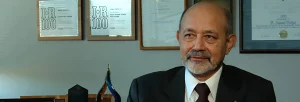(February 7, 2025) Picture this: billions of people streaming movies, making video calls, and scrolling through social media, all at lightning-fast speeds. Our world runs on wireless networks so seamlessly integrated into daily life that we rarely stop to think about how it all works. But every revolution has a hero. Behind the invisible marvel of modern technology stands a quiet visionary, Padma Bhushan Dr. Arogyaswami Paulraj, the scientist who invented MIMO (Multiple Input, Multiple Output) technology. His work powers 4G, 5G, and Wi-Fi networks, enabling the digital age as we know it. This is the story of his incredible journey, one that deserves to be told and celebrated.
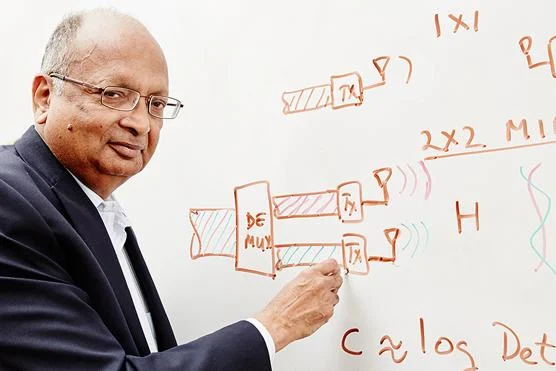
“Much of our wireless technology would not exist without MIMO,” Paulraj explained in an interview. “It’s amazing to think how something that started as a mathematical experiment could transform the way billions connect.” His discovery of MIMO emerged from a groundbreaking observation during his research at Stanford in 1992. “The receiving antenna array could separate transmissions from closely spaced antennas in a way that seemed to defy physical principles,” the Global Indian recalled, describing the moment of insight that revolutionized wireless communication.
The Call to Adventure: From Pollachi to the World
Born in 1944 in Pollachi, a small town in Tamil Nadu, Paulraj grew up in a modest household where education was the cornerstone of hope. His father, a school headmaster, instilled in him a love for learning that transcended their financial struggles. Paulraj’s childhood was defined by boundless curiosity, spending hours at the local library devouring books on science and engineering. “Education was my way out,” he later reflected, a sentiment that fueled his drive to push boundaries.
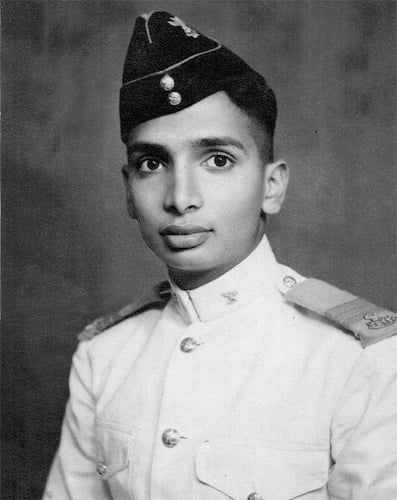
Dr. Arogyaswami Paulraj at National Defence Academy
His turning point came at 16 when he earned a place at the National Defence Academy (NDA). “I join the Navy because it provided free education and a secure career path.” While most cadets excelled in sports and physical training, Paulraj’s heart lay in academics. He immersed himself in science and mathematics, laying the foundation for the groundbreaking work that would one day change the world.
Trials and Triumphs: Reinventing India’s Naval Defense
In 1965, Paulraj was commissioned into the Indian Navy, setting him on a path of innovation and service. India’s naval fleet relied on imported sonar systems that failed in warm, saline waters. This vulnerability was starkly highlighted during the Indo-Pakistan War of 1971, when INS Khukri, a Blackwood-class ASW Frigate, was sunk by a torpedo attack from the Pakistani Navy’s PNS Hangor submarine. Nearly 200 lives were lost, and the outdated Sonar 170B system was partly to blame. Paulraj was assigned the urgent task of improving the sonar’s performance. “The loss of Khukri made it clear that our systems needed to be modernized,” Paulraj later explained.
Returning to IIT Delhi, he redesigned the 170B sonar system by integrating advanced transmit and receiver chains enabled by emerging integrated circuit technology. In just two years, the upgraded system was successfully evaluated and approved for deployment, with production handled by a government factory. “This project wasn’t just about better technology—it was about giving our fleet the tools to protect our waters,” Paulraj said.
After taking a year off from the Navy to work at Loughborough University in the UK, Paulraj returned to India to advocate for the development of modern sonar systems, a technology the Navy was actively seeking. With the Navy’s support, Paulraj led the development of the APSOH (Advanced Panoramic Sonar Hull) system, a world-class surface ship sonar of its time. “APSOH easily outperformed the ASW sonars we saw in Europe and the former Soviet Union,” he said. It took seven years for APSOH to reach certification and production, but its success solidified India’s capability to innovate on a global scale. Designed specifically for India’s unique maritime environment, APSOH transformed naval defense. “APSOH was more than just technology,” he said. “It was proof that India could achieve world-class innovation.”
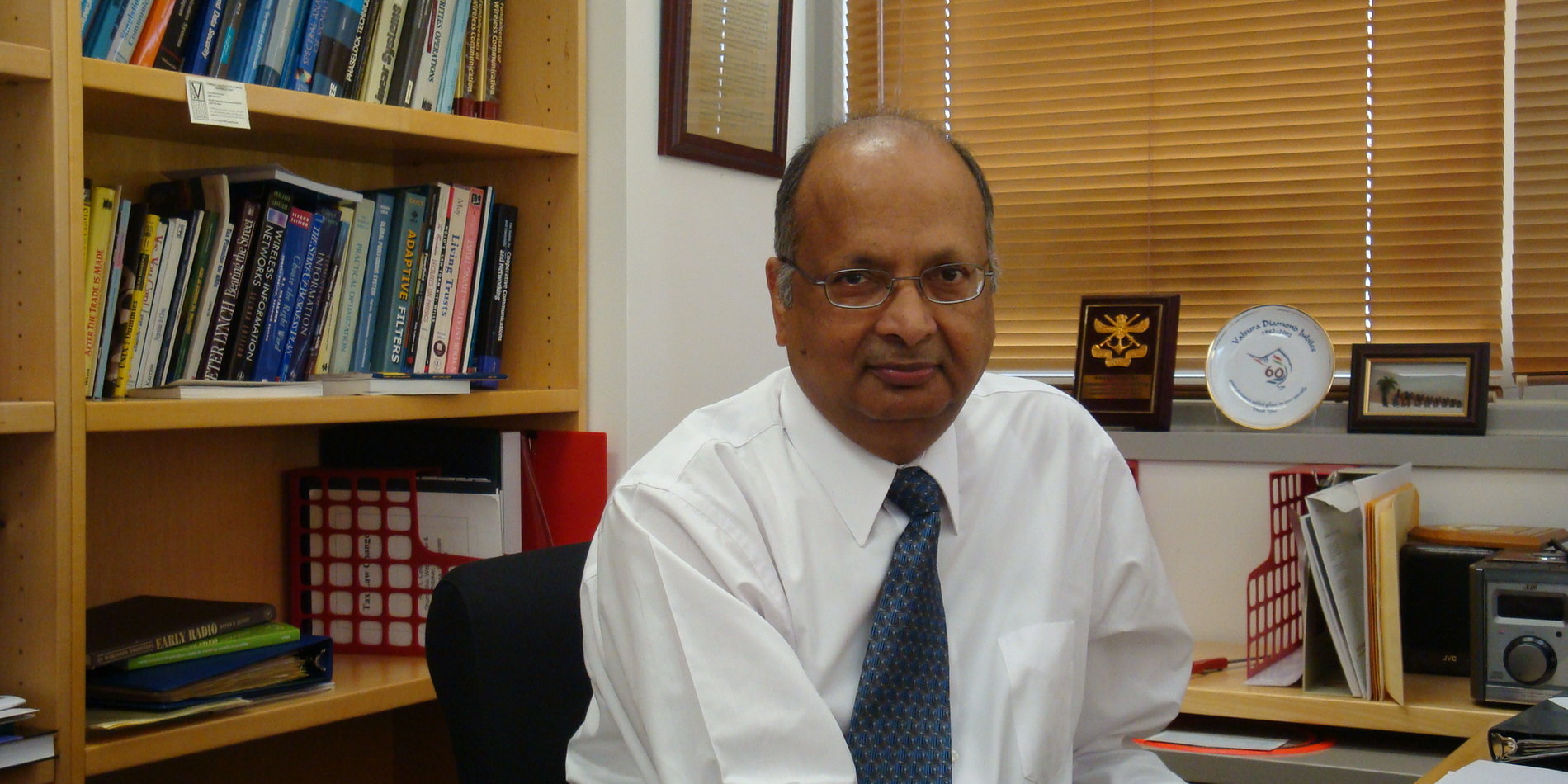
Paulraj’s leadership on APSOH highlighted the Navy’s commitment to self-reliance. “This wasn’t just about developing better sonar; it was about showing that India could lead in advanced technology,” he reflected. Following APSOH, Paulraj took a two-year sabbatical at Stanford University. “It was a significant transition—from running a large multi-agency development program to becoming a desk-bound researcher working on a math problem,” he explained. Despite the challenges, the experience broadened his perspective and prepared him for his next major breakthrough.
The Big Break: Creating MIMO and Revolutionizing Communication
After 25 years of service, Paulraj retired as a Commodore in 1991, ready to take on new challenges. His quest for innovation brought him to Stanford University in 1992, where he began research for DARPA (Defense Advanced Research Projects Agency). It was here that he developed MIMO technology, a breakthrough that would change how the world communicates.
MIMO uses multiple antennas at both transmitting and receiving ends to dramatically improve the speed and reliability of wireless communication. “I didn’t set out to change the world,” Paulraj humbly remarked. “I just wanted to break the barriers in wireless communication.”
Today, MIMO forms the backbone of 4G, 5G, and Wi-Fi networks, connecting billions of devices globally. By 2022, MIMO-powered networks had generated an estimated $7.6 trillion in economic value, touching every corner of the world—from urban hubs to rural communities.
Challenges and Allies: Overcoming the Odds
No hero’s journey is without obstacles. Paulraj faced skepticism about the viability of MIMO technology in its early days. As an immigrant in the US, he often felt the need to prove himself twice as hard. But his focus on innovation silenced the doubters.
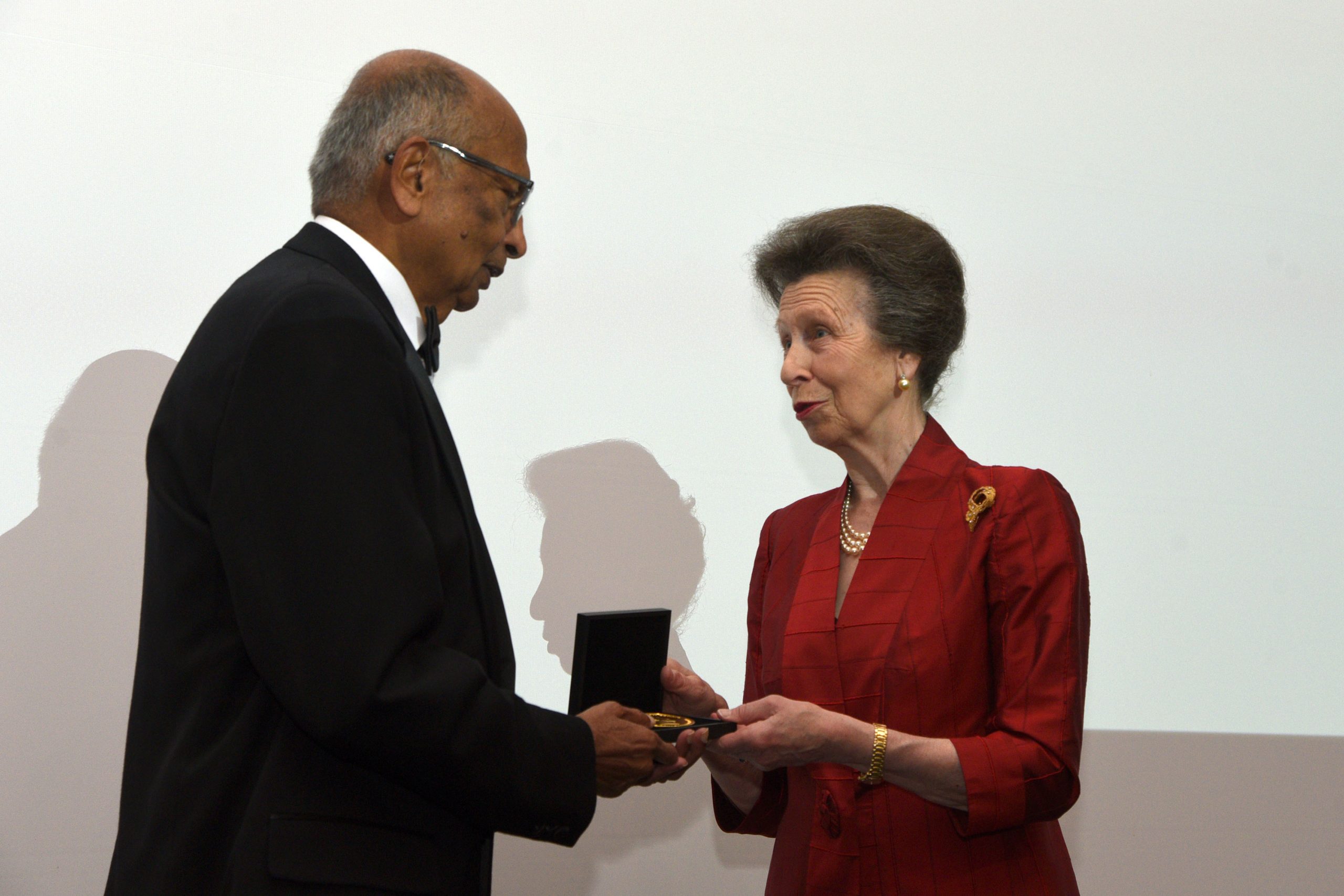
Dr Arogyaswami Paulraj, receiving the Prince Philip Medal
Beyond his technical work, Paulraj also ventured into entrepreneurship, founding companies that pushed wireless innovation forward. In 1999, he founded Iospan Wireless Inc., pioneering MIMO-OFDMA technology, which became foundational for modern wireless standards. Later, he co-founded Beceem Communications, focusing on 4G WiMAX chipsets, a company that was eventually acquired by Broadcom. In 2014, he started Rasa Networks, specializing in Wi-Fi network analytics, which was later acquired by Hewlett Packard Enterprise.
Over the years, Paulraj’s work has earned him more than 400,000 citations and numerous prestigious awards, including the IEEE Alexander Graham Bell Medal, the Marconi Prize, and the European Inventor Award in 2016. In 2023, he was honored with the IET Faraday Medal, one of the highest accolades in engineering. “Awards are nice,” he said, “but the real reward is knowing that billions benefit from what we’ve created.”
The Return: Giving Back to India and the World
Despite his global success, Paulraj’s heart remains in India. He has worked tirelessly with the Indian government to advance AI, military electronics, and emerging technologies. As a Senior Advisor to Celesta Capital, he fosters innovation by bridging the gap between Silicon Valley and India. He has also played a pivotal role in guiding India’s semiconductor mission, ensuring the country stays at the forefront of technological development.
Beyond technology, Paulraj is a passionate advocate for education reform. “Creativity and critical thinking must be at the heart of education,” he often emphasizes. His mentorship of young researchers reflects his belief that the next generation holds the key to future breakthroughs.
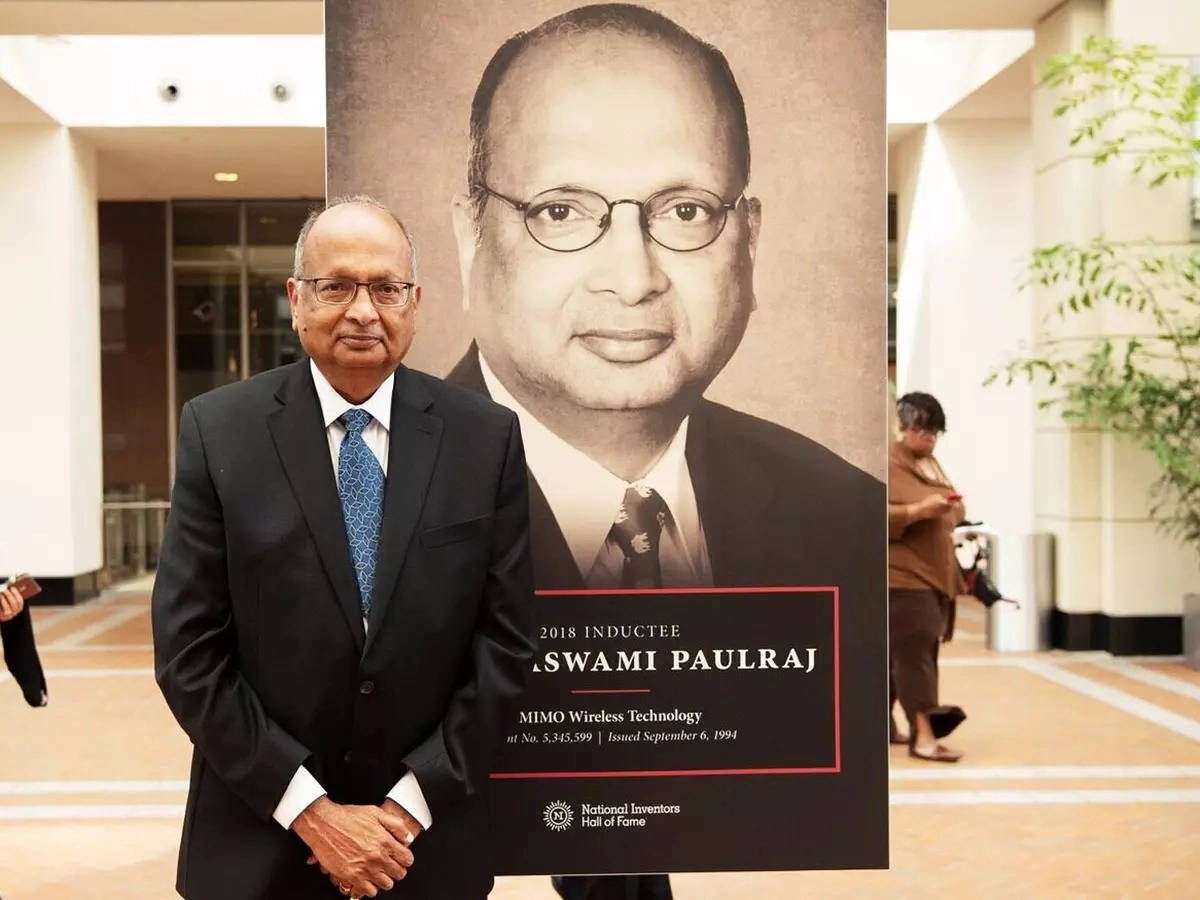
Dr Arogyaswami Paulraj
A Legacy of Inspiration
Dr. Arogyaswami Paulraj’s story is nothing short of extraordinary. From a curious boy in Pollachi, flipping through library books on science, to a global innovator shaping the backbone of modern communication, his journey is filled with groundbreaking moments that have redefined possibilities in technology. Now an Emeritus Professor at Stanford, Paulraj remains a source of inspiration for aspiring scientists and engineers. He mentors young researchers, urging them to think big and innovate boldly. His current initiatives focus on harnessing wireless technology to tackle some of the world’s toughest challenges, from bridging the digital divide in rural areas to advancing telemedicine for underserved communities.
The next time you stream a movie, make a video call, or scroll through social media, remember Dr. Arogyaswami Paulraj—a hero whose vision has made it all possible, one antenna at a time.


